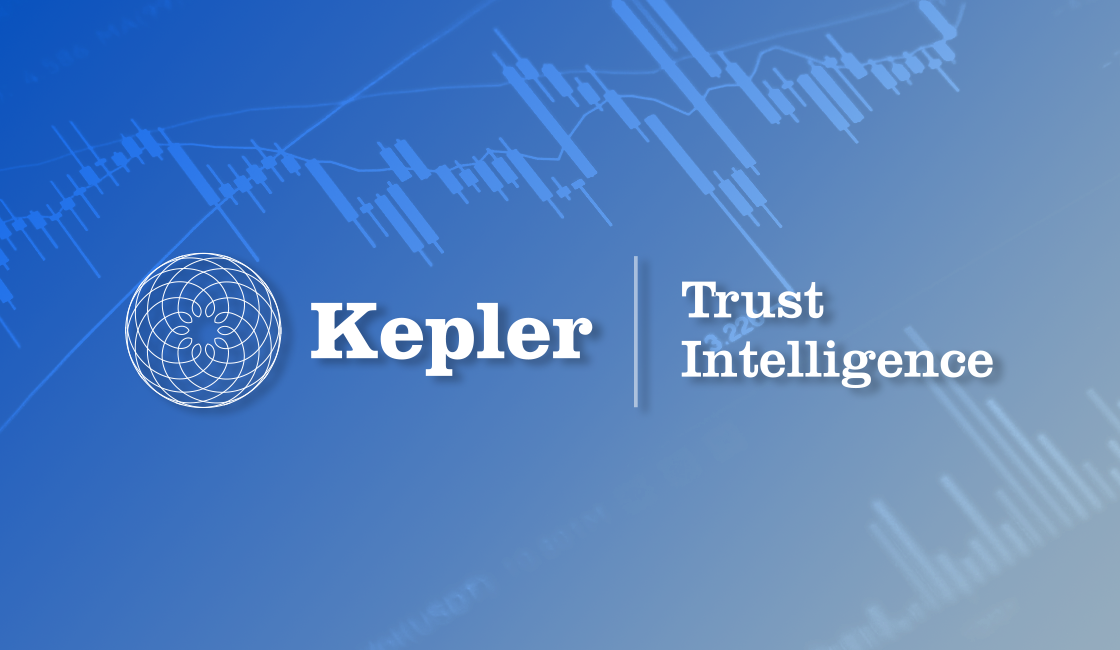Index
Macro Update
by Dean Orrico, President & CEO and Robert Lauzon, Managing Director & CIO
Equity markets snapped back in November, erasing losses from the previous three months. The S&P 500 Index returned 8.9%, its best monthly return since July 2022. The rise in equities was fueled by a combination of falling bond yields, subsiding inflation and lower oil prices. The Index closed just 5% below all-time highs which are now within striking distance if the Santa Claus rally continues.
Middlefield’s core strategies, which are focused on equity income, are well-positioned against the current backdrop. In November, 10-year government bond yields declined 60 basis points in the US and 51 basis points in Canada, settling at 4.33% and 3.55%, respectively. The sharp decline in yields renders GICs and other fixed income investments less attractive on a relative basis – a headwind that dividend strategies have been facing for nearly two years. Canadian Real estate, utilities and pipelines all delivered high-single-digit returns in November, yet they have still generated negative returns on a year-to-date basis. Despite the magnitude of the recent rally, we believe it represents the early stages of a prolonged recovery in dividend-paying stocks that should continue in 2024.
The final FOMC meeting of the year on December 12th will be closely watched for signs that the Federal Reserve is done raising rates. Our view is that the Fed is finished with rate hikes for the current cycle and will likely cut rates in the first half of next year. The October JOLTS report showed that job openings slid to 8.7 million, well below estimates and the lowest level since March 2021. The headline CPI inflation rate in October was 3.2% but excluding shelter, it was even lower at just 1.5%. Services inflation is also starting to fall after being stuck around 5% since the beginning of 2022. All these data points support the notion that rate hikes are achieving their desired effects. Based on the CME FedWatch Tool, the futures market is pricing a 63% chance that the Federal Reserve will cut rates at or before its March 20 meeting.
|
|
With inflation falling and the labour market trending towards equilibrium, the biggest risk to our current view on rates is the continuing strength of consumer spending. Shoppers spent $9.8 billion in the US on Black Friday and made $12.4 billion of online purchases on Cyber Monday – both all-time records. Consumer confidence in the US also saw a positive shift in November, marking its first increase in four months. While too much consumer spending may cause the Fed to delay rate cuts, we expect it to follow the path of inflation and the labour market. The Atlanta Fed’s GDPNow tracking model shows that real consumer spending is rising at 2.7% during Q4, down from Q3’s pace of 3.6%. This projection aligns with our base case for a soft landing in 2024, which we view as the optimal scenario for equities next year.
Real Estate
Middlefield Fund Tickers & Codes: MREL / MID 600 / RS / RS.PR.A / RA.UN / MSRE.UN
by Dean Orrico, President & CEO
REITs caught a bid in November, generating total returns of 8.2% in Canada and 12.4% in the US. After several months of steady increases, bond yields fell sharply, causing a relief rally across the sector. We anticipate the recent momentum to continue. The TSX capped REIT Index is showing technical signs of reversing a downtread and breaking through key resistance levels during the first week of December.
|
|
The international component of our real estate strategies performed well this month. Vonovia SE, Europe’s leading residential real estate company with rental properties throughout Germany, Sweden and Austria, returned 18% in November. Segro PLC, a UK industrial REIT with distinct last-mile logistics assets, returned 14%. Several of our US REITs generated similar returns, including SBA Communications (+18.8%), Sun Communities (+16.3%), Prologis (+14.1%) and Equinix (+12.3%). Months like this highlight the benefits of supplementing our core exposure to Canadian REITs with differentiated companies that provide diversification both geographically and by asset class.
With the era of cheap debt coming to an end, we expect investors to shift their focus to fundamentals and operational expertise – an area where public REITs have a meaningful advantage over their private counterparts. Many private real estate products have higher leverage and, hence, rely on sustainably lower interest rates. Not only are the public REITs in the multi-family, grocery-anchored retail and industrial sectors benefiting from high occupancy and growing demand from quality tenants, the public REITs also have steadily reduced their leverage, increased liquidity and staggered their debt maturities since the global financial crisis in 2008-09. These attributes provide them with greater access to capital in more challenging markets as well as enhanced flexibility to make more optimal capital allocation decisions. As a result, many of our public REIT holdings have recently increased dividends and are well positioned to re-rate higher as interest rates continue to decrease.
Healthcare
Middlefield Fund Tickers & Codes: MHCD / MID 325 / SIH.UN
by Robert Moffat, Portfolio Manager
The S&P 500 healthcare sector generated a total return of 5.4% in November. MedTech stocks led to the upside with the Life Sciences Tools & Services and Healthcare Equipment sub-industries generating total returns of 13.5% and 10.6%, respectively. Defensive pockets of the sector, such as Biopharma and Managed Care, were laggards amidst risk-on market conditions.
Our healthcare funds have overweight exposure to MedTech stocks which was additive to performance this month. Dexcom (+30.1%) and Intuitive Surgical (+18.5%) were standout performers while several of our other MedTech positions generated double-digit returns. Danaher (+16.3%) and Thermo Fisher (+11.5%), our core positions in the Life Science Tools & Services Industry, were also positive contributors to performance. The November rally in these stocks highlights the benefits of having diversified exposure within the sector.
On November 30th, AbbVie announced the acquisition of ImmunoGen for $10.1 billion, representing a 95% premium to the pre-acquisition value. The deal was centered around ImmunoGen’s flagship cancer therapy ELAHERE which received accelerated FDA approval in November 2022. ELAHARE belongs to an exciting new class of drugs called antibody-drug conjugates (ADCs) – a type of targeted cancer therapy that combines the guiding capabilities of an antibody with a potent cytotoxic payload. These antibodies specifically target cancer cells, delivering the attached drug directly into the cancer cells, thereby minimizing damage to healthy cells and improving treatment effectiveness. ADCs have been the focal point of several large acquisitions in recent years, including Pfizer’s $43 billion acquisition of SGEN (33% premium) and Gilead’s $21 billion acquisition of Immunomedics in 2020 (110% premium). Merck also announced a partnership with Japanese drugmaker Daiichi Sankyo in October to jointly develop three of its ADC candidates in a deal that could be worth up to $22 billion. It is believed that ADCs could progressively replace traditional chemotherapy, opening a $140 billion market over time.

Sustainable Infrastructure
Middlefield Fund Tickers & Codes: MINF / CLP.UN / MID 265 / MID 510 / ENS / ENS.PR.A
by Robert Lauzon, Managing Director & CIO
Utilities and Clean Tech stocks responded positively to the recent decline in 10-year yields. We believe both areas are significantly undervalued following macro-driven weakness in 2023. Given that the sustainable infrastructure space is very interest rate sensitive, we have become increasingly positive in our outlook for next year. Typically financed with significant amounts of debt, renewables projects stand to benefit if interest rates continue to follow inflation lower in 2024.
Although lower interest rates will help the economics for certain renewables projects, companies are still becoming more selective and disciplined with the sanctioning of new projects. A prime example is RWE, a top 10 holding, that recently increased its Internal Rate of Return (IRR) target to 8% from 6%. This strategic move, necessitated by rising costs, aims to maintain their spread above the Weighted Average Cost of Capital (WACC) between 100-300 basis points. RWE’s ambitions don’t stop there; they’ve also elevated their long-term EBITDA growth target to 14% from 9%. This growth is underpinned by a diverse pipeline of projects in the aggregate exceeding 100 GW generating capacity, with 45% slated to be operational by 2027.
Enbridge’s 2024 guidance highlighted the company’s expectation for year-over-year strength in the base business with a 4% increase in EBITDA and 3% increase in DCF/share. This comes despite the negative impact of the Mainline toll settlement as well as some lost volumes when the Trans Mountain expansion is complete. Further, as the company works to complete its recently announced US gas utilities acquisition with Dominion Energy, Enbridge is set up to deliver visible multi-year growth in EBITDA, EPS, and DCF/share, while keeping debt/EBITDA within its target range. Enbridge also declared its 29th consecutive annual dividend increase, bumping it up 3.1%. Given its position as the largest North American energy infrastructure player by enterprise value with a well-contracted, diverse asset base and strong organic growth opportunities, we believe Enbridge deserves to return to its historical premium valuation to peers.
Technology & Communications
Middlefield Fund Tickers & Codes: MINN / SIH.UN / MID 925
by Shane Obata, Portfolio Manager
The technology sector performed strongly in November with a 11.9% return. The software industry led the sector to the upside, climbing 13.3% and notching its best month in over 15 years. While the tech sector has enjoyed robust year-to-date performance, its rally is firmly rooted in strong fundamentals. Heading into 2024, we anticipate the tech sector to maintain its momentum, delivering EPS growth that significantly outpaces the broader market. Although we expect market breadth to improve significantly next year, the “Magnificent Seven” should continue to perform well, supported by more than twice the growth of the broader market in sales and earnings per share in both 2024 and 2025.
The sphere of Artificial Intelligence (AI) has evolved to become much more sustainable and investible. While early frontrunners like NVIDIA and Microsoft paved the way, other companies, such as AMD (a top 10 holding) are starting to show concrete signs of AI-driven revenue growth. AMD’s recent announcement of its 2024 revenue targets for the MI300, a potential market disruptor against NVIDIA, is a testament to this. With expectations of generating at least $2 billion in sales next year, the MI300 is on track to become the company’s fastest product to reach $1 billion in sales in its history.

Resources
Middlefield Fund Tickers & Codes: MID 800 / MID 161 / ENS / ENS.PR.A / MID 265
by Dennis da Silva, Senior Portfolio Manager
In November, the price of gold gathered momentum due to dovish economic data and a weaker US dollar. The spot gold price marked its first-ever monthly close above $2,000/oz and hit an all-time high of $2,072/oz in early December, surpassing the previous record set in August 2020. Increased buying by central banks has supported gold prices since the Russia-Ukraine conflict, with over 2.5 times the usual quarterly purchases. Shares of gold producers have lagged the commodity’s 11.6% increase this year but are starting to perform better. The S&P/TSX Global Gold Index rose 8.1% in November compared to 2.7% for spot gold.
The delayed OPEC+ meeting extended current production cuts through Q1 2024 and included an additional 900,000 bbls/d voluntary reduction. The move aims to boost market sentiment amid concerns of weaker oil demand in 2024 and potential non-OPEC supply increases, notably from the US. The market’s initial response to the announcement was subdued, reflecting a degree of skepticism about how many members will comply with the new production commitments. Notwithstanding these concerns, we remain constructive on oil prices and equities. Assuming the OPEC “put” remains in place, our base case is a soft landing for the economy and an increase in net demand for oil when WTI is under $80 (eg. SPR buys oil).
Canada’s entry into the international LNG market is approaching and Canada will play an important role in meeting global demand for natural gas. Recent information indicates that LNG Canada, Canada’s first LNG facility, could start production by the end of 2024. We believe that increasing Canadian LNG exports in the coming years will be a tailwind for the sector, positively reshaping the Canadian market for natural gas. Beyond our borders, ARC Resources signed a second long-term agreement to supply natural gas to Cheniere Energy’s LNG facility in the Gulf Coast starting in 2029. Combined with an existing Cheniere LNG contract and a Memorandum of Understanding with Cedar LNG in B.C., this would ultimately result in over 25% of ARC’s natural gas being exposed to global LNG pricing.
ESG: Environmental, Social & Governance
Middlefield Fund Tickers & Codes: MDIV / MINF / CLP.UN / SIH.UN / MSRE.UN / MID 265
by Stephen Erlichman, Chair, ESG (Environmental, Social and Governance)
In Canada and around the world, there has been a lack of consistency and thus confusion about the meaning of key terminology used to describe the categories of responsible investment. Therefore, it is gratifying to see that a publication entitled “Definitions for Responsible Investment Approaches” was issued in November by three well-known organizations, namely the Chartered Financial Analyst (CFA) Institute, the Global Sustainable Investment Alliance (GSIA) and the UN Principles for Responsible Investment (PRI), designed to promote consistent and precise use of certain ESG terminology and thereby help to address greenwashing.
The CFA Institute, the GSIA and the PRI emphasized that the publication “clarifies and harmonizes existing terms and definitions and does not create new terms or meanings”. These organizations also state that the publication is intended for investors, regulators, policymakers and other market participants. The following are the five terms and their definitions which are set out in the publication.
Screening: the application of rules based on defined criteria that determine whether an investment is permissible.
ESG integration: ongoing consideration of ESG factors within an investment analysis and decision-making process with the aim to improve risk-adjusted returns.
Thematic investing: selecting assets to access specified trends.
Stewardship: the use of investor rights and influence to protect and enhance overall long-term value for clients and beneficiaries, including the common economic, social and environmental assets on which their interests depend.
Impact investing: investing with the intention to generate a positive, measurable social and/or environmental impact alongside a financial return.
In the 23 page publication, each of the five terms has its own section which includes a definition, a list and explanation of the definition’s essential elements, guidance for using the term in practice, and the definitions that served as the primary inputs and reference points. It will be interesting to see whether regulators adopt these five definitions into law or whether market participants start to use the definitions voluntarily. In any event, hopefully the publication of the definitions will in fact reduce confusion and assist in efforts to address greenwashing around the world.

Exchange Traded Funds (ETFs)
Mutual Funds (FE | F)
TSX-Listed Closed-End Funds
| Fund | Ticker | Strategy |
|---|---|---|
| MINT Income Fund | MID.UN | Equity Income |
| Sustainable Real Estate Dividend Fund | MSRE.UN | Sustainable Real Estate |
| International Clean Power Dividend Fund | CLP.UN | Sustainable Power |
| Middlefield Global Real Asset | RA.UN | Real Assets |
| Sustainable Innovation & Health Dividend Fund | SIH.UN | Innovation & Healthcare |
TSX-Listed Split Share Corps. (Class A | Preferred)
| Fund | Ticker | Strategy |
|---|---|---|
| E-Split Corp. | ENS | ENS.PR.A | Energy Infrastructure |
| Real Estate Split Corp. | RS | RS.PR.A | Real Estate |
LSE-Listed Investment Fund
| Fund | Ticker | Strategy |
|---|---|---|
| Middlefield Canadian Income Trust | MCT | Canadian Equity Income |















